Nowadays, polyethylene water storage tanks are seen in many commercial, administrative, residential buildings and complexes, and even in many gardens and farms. People use the water tank to consume the drinking water or to irrigate their fields and gardens. Using a polyethylene water tank brings many advantages and achievements. For example, it is possible to have a suitable water pressure during the peak water consumption times in a residential building using a water tank and keeping water at a suitable level for the residents of the building. In addition, frequent water outages, which happen for various reasons, can no longer cause problems for people.
However, one of the issues that arise in relation to the proper maintenance of polyethylene tanks and different types of tanks in general is how to wash and clean the Tabarestan water tank. When the urban drinking water reaches the entrance pipe of the building, it has various salts and these salts are deposited (settled) as a result of water storage in tanks. The entry and settling of these salts and sediments leads to the tartar of the body and the bottom of the tank.
Consequently, the water that reaches the faucets of the units will not be of good quality. You must clean the water tank continuously and at specific intervals to prevent this from happening but many people refuse to do it because they don't know how to properly wash tanks or cause the damaging of the tank and make it unusable by doing some mistakes. We are going to provide you with useful information in this article by providing instructions on how to wash the tanks.
Why Should the Inside of the Water Tank be Cleaned?
The first question that is raised to most people is why should the water tank be cleaned? It should be pointed out in response to this question that the water entering the tank has various salts. These salts and sediments settle on the tank bottom and provide suitable environments with the growth and nutrition of bacteria.
The growth of these bacteria in the tank adds the taste and smell to the water inside the tank, which makes it impossible to use the water. These bacteria and sediments will be removed from the tank and the tank will return to its original state by cleaning and dredging the tanks. In general, the growth of bacteria, algae, as well as the presence of mud and tartar on the tank bottom is the main reason to wash the tanks. We will explain the complete instruction for cleaning the tank in the following.
How and Steps to Wash Polyethylene Tanks
As mentioned, the polyethylene water tank should be cleaned periodically but how should the polyethylene water tank be cleaning and what are the steps? The general steps of tank cleaning are as follows:
Complete draining of tank water
Cleaning inside the tank
Tank disinfection
We will investigate all these steps in the following:
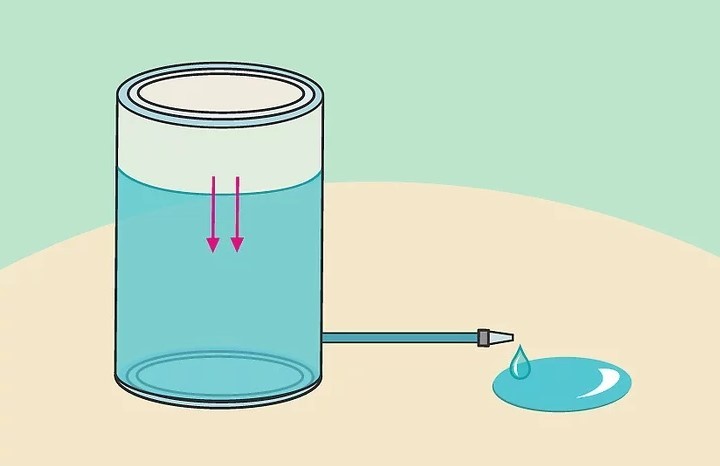
(1) Complete draining of tank water
The water in the tank must be completely drained in the first part before everything. This process also has its own steps, which are as follows:
Opening the drain valve
Removing the remaining water using a bucket
Making the remaining water in the tanker empty
Opening the drain valve
At first, the drain valve should be opened for this purpose and the water in the tank should be allowed to drain out. Two points should be noted regarding this process:
It is better to direct the water exit route by connecting the hose
The drain valve is installed above the tank bottom in the water tanks. This causes that the whole water in the tank will not be drained only by opening this valve. Consequently, they can be slightly tilted to empty the small tanks but a sloping and moving surface is the best option for large tanks.
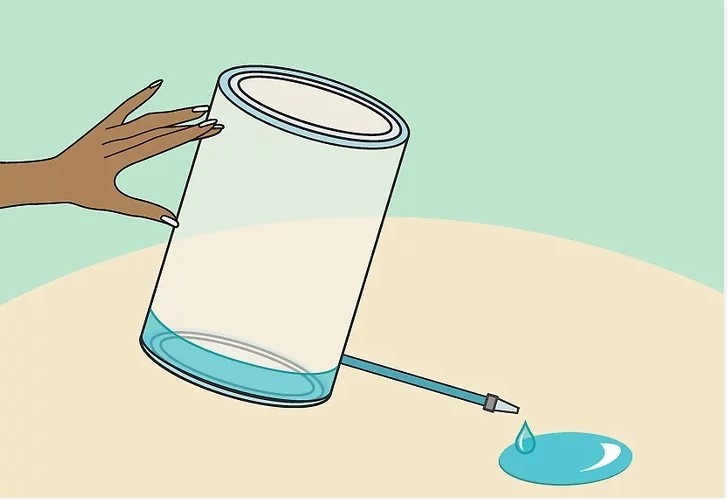
Taking Out the Remaining Water Using a Bucket
As mentioned, some water remains at the tank bottom after opening this valve due to the installation of the drain valve above the tank bottom. You can use a bucket in the initial stages and glass and small containers in the final stages to drain this amount of water.
Complete Emptying of the Tank
It is not possible to completely empty the water tank using small containers. For this reason, one of the following methods should be used to completely drain the water inside products such as the funnel tank:
Turn it upside down if the tank is small.
Using a vacuum pump to suck all the remaining water
Using a dry and clean cloth or towel
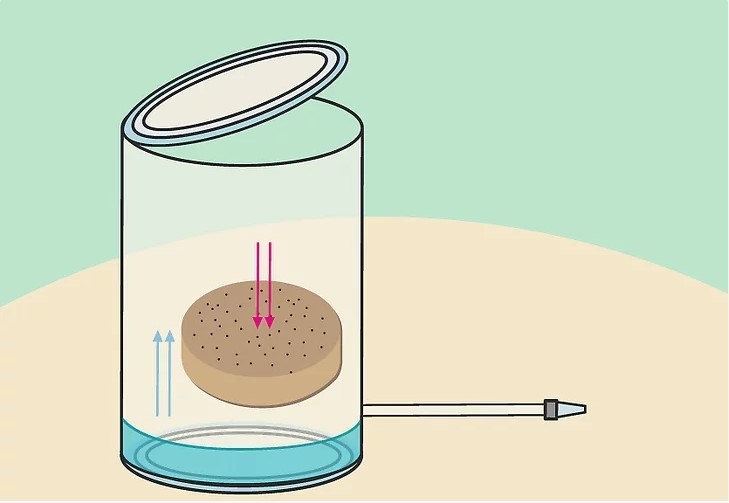
(2) Cleaning Inside the Tank
The following steps should be followed to clean the internal surfaces of the water tank according to the instructions:
Making washing solution
Using the appropriate washing solution causes the process to accelerate and to become easier. You can combine some lukewarm water with washing liquid or powder (laundry detergent) to make a washing solution.
Brushing of Internal Surfaces
Sediments and sludge should be removed from the tank internal surfaces using a brush in this section. Using a washing solution makes the process in this section much easier. It is better to pay attention to the following points to brush the internal surfaces of the tank:
Try to brush by a proper pressure so that the sediments are separated well.
It may be necessary to use handled and long-handled brushes to clean some of them due to the variety of volume and capacity of the tanks. It is better to move the brush vertically from top to bottom in such a situation.
Never use wire-type cleaning sponges and brushes because these brushes can damage and scratch the tank wall.
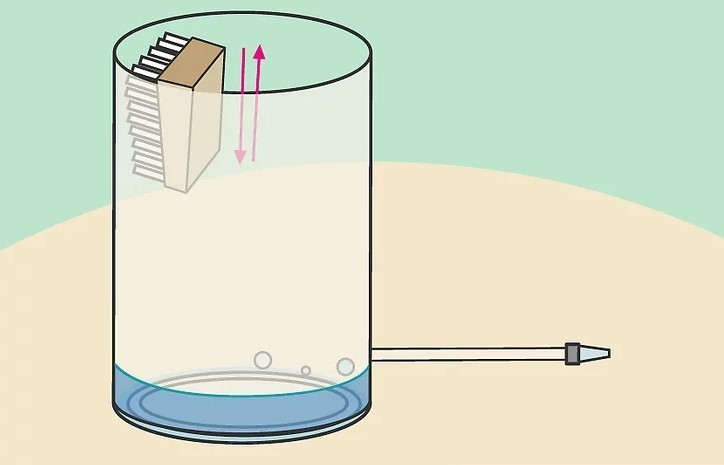
Water Jet Use
Using water jet is one of the ways to clean the tanks. Follow the steps below to use this device:
Filling the water jet with water or washing solution
Starting from a distance of 120 to 150 cm from the surface and getting closer then
Using a water jet with an angle of 45 degrees
Using a water jet until all the deposits are removed
Complying with safety tips to use the water jet, such as wearing safety glasses and so on.

Use baking soda
If it is difficult to clean the deposits from the tanks’ walls, then you can use baking soda on the wall and then brush it.
Brushing corners and joints (fittings)
Corners and joints are among the places that are not easy to clean, and more time should be allocated for this task. It is better to use a toothbrush to clean these places.
Rinsing and washing completely
It is time to completely wash the tank after all the tartars are removed. You can use water jet or water hose for this section. Among the important points in this section is to pay special attention to the corners and cleaning all surfaces of the tank. One of the other ways to rinse and wash the tank completely is to fill it with hot water and then to empty it after a few hours. It is better to repeat this several times so that no liquid remains inside the tank.
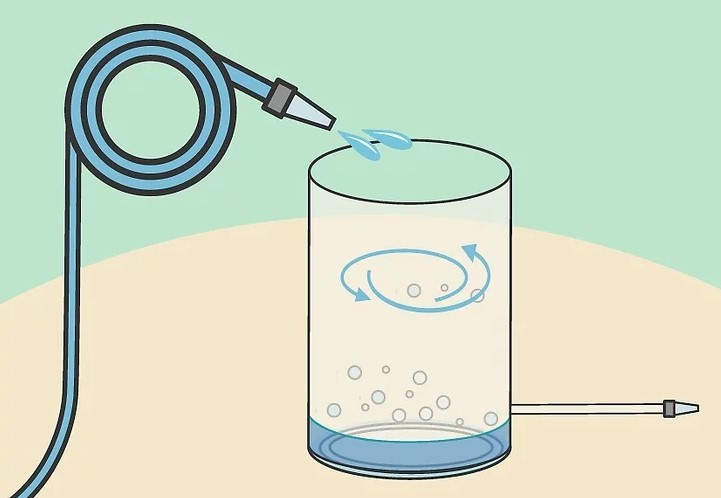
Washing inside the Fittings and Hoses Connected to the Tank
For this purpose, it is better to pour the washing solution into the pipes and hoses and then pump the desired solution using a water pump. Then, hot water should be pumped into the hoses and pipes several times to remove the washing solution completely.
3) Tank Disinfection
It is time to disinfect the tank after emptying and cleaning. The tank disinfection must be conducted step by step. These steps will be mentioned in order in the following.
First, three quarters (3/4) of the tank should be filled with clean water.
Make a combination of water and disinfectant solution using a chlorine solution (sodium hypochlorite or bleach). (composition based on the table at the end of the article)
Filling a quarter (1/4) of the remaining space with water and disinfectant solution
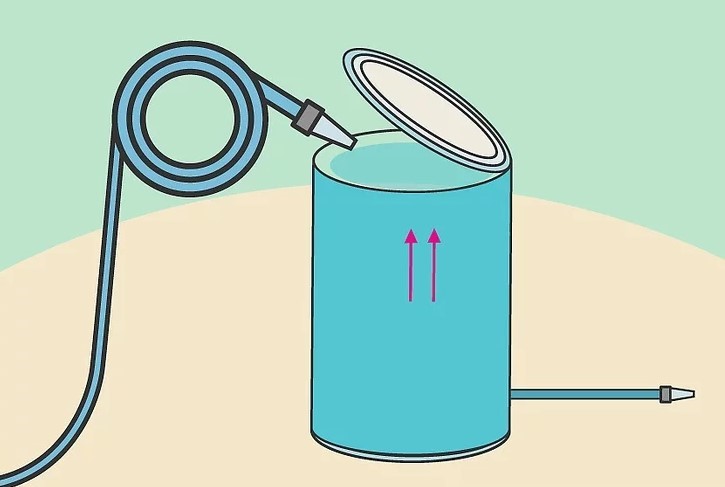
Leaving the tank for 24 hours
Chlorine concentration measurement by a chlorinometer kit (repeat steps 2 to 4 if measurement is not possible)
Complete draining of the tank (same as draining the water in the tank)
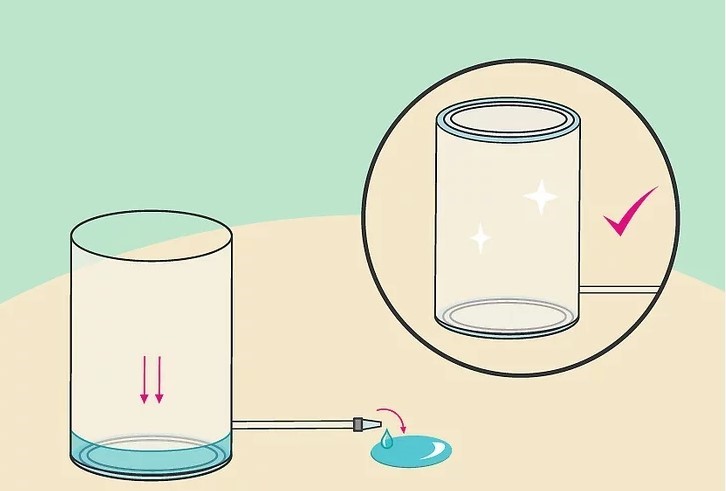
How to Clean Different Types of Water Tank
In general, the tanks can be cleaned in two ways due to the wide variety of volume and capacity of tanks. The first mode is when it is not possible to enter inside the tank due to the dimensions or the size of its lid. The second mode is suitable for the time when it is possible for a person to enter the tank in direction of dredging. We will investigate both methods completely and step by step in the following.
Impossibility of Entering the Tank (First Mode)
In the first mode, when it is not possible to enter the tank, dredging and cleaning the tank should be conducted using sodium hypochlorite or bleach. The dredging steps in the first mode will be mentioned in the following:
Taking the tank out of external circuit using the "bypass" piping system
Complete emptying of the tank
Cleaning the walls and floor of the tank using long-handled brooms
Rinsing the tank
Adding sodium hypochlorite or bleach (with 5% chlorine) as much as 5 drops per 100 liters of water into the tank
Leaving the tank for 24 hours
Emptying the tank again after the specified period of time
Cleaning and rinsing the tank
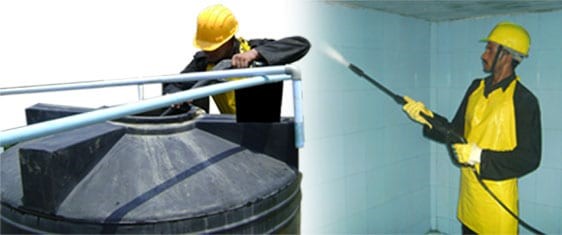
Possibility of Entering the Tank (Second Mode)
In the second mode, when it is possible to enter the tank, a person enters the tank and then cleans the tank using equipment such as dishwashing wire, scotch (tough dishcloth), and brush. Bleach must be prepared first in this method. In general, cleaning will be conducted with a higher quality than the first mode the second mode i.e. when it is possible to enter the tank. Dredging procedures will be reviewed in this case in the following:
Taking the tank out of the circuit (same as the first mode)
Complete draining of the tank (try to remove all sediments from the tank by creating turbulence)
Cleaning the tank using a brush
Washing the tank with high-pressure water after cleaning by a brush
Preparation of a combination of water and bleach (with 5% chlorine) as much as a teaspoon of bleach in 3.5 liters of water.
Washing the body and bottom of the tank using a brush and prepared solution
Leaving the tank for 24 hours
Complete emptying of the tank after the mentioned time
Washing the tank with high-pressure water
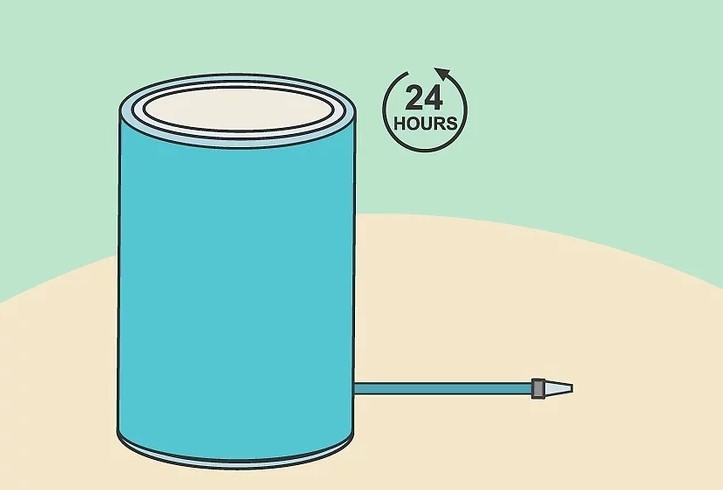
Important health tips regarding person entrance into the tank
Some points become important since a person must enter the tank in the second mode. You should pay special attention to the following points to use bleach and chemical detergents:
Chemical detergents should not be used in the initial stages of washing.
It is better to use detergents as soon as possible and at the end of the process.
The tank lid should not be closed during the washing under any circumstances.
The tank lid should not be closed during the washing under any circumstances.
It should be ensured that the air enters and leaves the tank during washing.
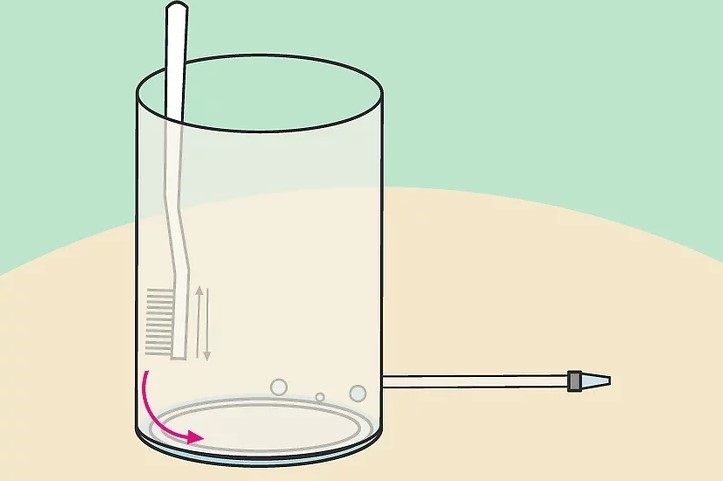
When Should the Water Tank be Cleaned?
One of the other frequently asked questions (FAQs) regarding the tank washing is the time intervals to do this. In general, it is not possible to determine an exact time for this because the need to wash the tank depends on the quality of the water entering it. In urban areas, where piped and suitable water enters the tank, the tanks should be cleaned approximately once a year. However, the easiest thing to recognize the time to wash the tank is to pay attention to the taste and smell of the water. Whenever it is felt that the water that comes out of the tanks and is used has a special taste and smell, the tank should be dredged.
You will fully understand the tanks cleaning methods by reading this article and the polyethylene tanks washing methods.
What should be the combination of chemical detergent and water to clean the tank?
In general, you can use 40 ml of bleach or sodium hypochlorite (with 5% chlorine) per 1,000 liters. Furthermore, you can act according to the following table to know this amount:
|
The amount of detergent (bleach or sodium hypochlorite with 5% chlorine) |
Water volume (liters) |
|
2 drops |
4.5 |
|
5 drops |
10 |
|
11 drops |
23 |
|
1.8 ml |
45 |
|
4 ml |
22 |
|
8 ml |
205 |
|
9 ml |
230 |
|
18 ml |
450 |
|
40 ml |
1,000 |
|
90 ml |
2,200 |
|
180 ml |
4,550 |
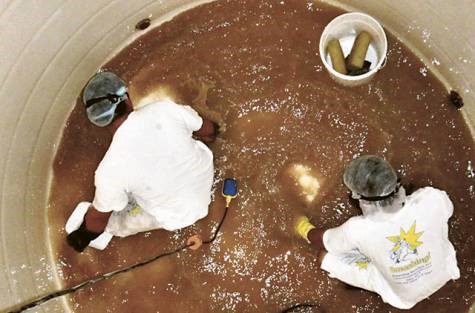
Conclusion on Water Tank Washing and Cleaning Method
We tried in this article to fully mention how to wash water tanks and provide you with detailed information. As you have studied, the water entering the tanks has many salts, which can create the conditions for bacteria growth by sedimentation. The tanks must be cleaned at different time intervals to prevent this from happening and to consume high-quality drinking water. This cleaning is conducted in two ways based on the possibility or impossibility of entering the tank. We have explained them in detail.
Tabarestan Plastic Complex, the largest producer of polyethylene tanks in the Middle East
Tabarestan Plastic Complex is one of the top and best producers of polyethylene tanks in Iran and the Middle East, which always attempts to produce high-quality products. With years of experience in production of polyethylene products, the complex has been able to capture a significant part of the market. Different types of tanks, including vertical, horizontal, septic, oval, funnel, spray, etc., are produced and supplied in single-layer, three-layer, and four-layer types in Tabarestan Complex. You can refer to authorized representatives of the complex throughout Iran to purchase the products of Tabarestan Plastic Complex.

 فارسی
فارسی English
English عربي
عربي کوردی
کوردی
User comments